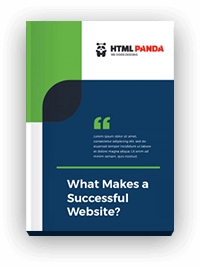Nofollow links get treated like the ugly stepchild of SEO. Most people think they’re worthless for rankings, but that’s not the whole story. Understanding how nofollow links actually work can change your entire link building strategy and help you spot opportunities other people ignore.
Google introduced the nofollow attribute back in 2005 to combat comment spam and paid links. The idea was simple – slap a nofollow tag on a link and Google would ignore it for ranking purposes. But like most things in SEO, what started as a simple concept has evolved into something much more complex.
What Nofollow Links Actually Do
The nofollow attribute tells search engines “don’t follow this link” and traditionally meant “don’t pass any ranking value through this link.” When you see rel=”nofollow” in a link’s HTML, it’s supposed to be a signal that this link shouldn’t count toward the target page’s authority.
Where you typically find nofollow links:
- Social media platforms (Facebook, Twitter, Instagram)
- User-generated content (blog comments, forum posts)
- Paid advertisements and sponsored content
- Internal links to login pages or terms of service
- Links in press releases distributed through services
- Wikipedia external links (though not all of them)
But here’s where it gets interesting – Google’s treatment of nofollow links has changed significantly over the years, and many SEO professionals haven’t caught up with these changes.
Google’s Evolving Approach to Nofollow
In March 2019, Google quietly changed how they handle nofollow links. Instead of completely ignoring them, Google now treats nofollow as a “hint” rather than a directive. This means they might still use nofollow links for ranking purposes if they think the link provides value.
Google introduced two new link attributes alongside the traditional nofollow:
- rel=”sponsored” – for paid or sponsored links
- rel=”ugc” – for user-generated content links
The old nofollow attribute still works, but Google now has more nuanced ways to handle different types of links. More importantly, they’ve admitted that nofollow links can still provide some SEO value.
What this means practically: Google might choose to follow nofollow links and pass some ranking value through them. They’re not going to tell us exactly when or how they make these decisions, but the fact that they’re considering these links at all changes the game.
This shift happened because Google realized that blanket ignoring of nofollow links was causing them to miss legitimate signals about page quality and relevance. A link from a major news site, even if it’s nofollow, still indicates something valuable about the target page.
Do Nofollow Links Actually Influence Rankings?
The short answer is yes, but not in the way most people think. Nofollow links don’t directly pass PageRank the way followed links do, but they influence rankings through several indirect mechanisms.
Direct ranking influence: Google has confirmed that nofollow links can still be used for ranking purposes when they provide valuable context or information. This is particularly true for links from high-authority domains where the nofollow attribute might be applied automatically but the link itself is editorially valuable.
Indirect ranking benefits: Nofollow links drive traffic, and traffic signals can influence rankings. A popular blog post that gets linked to from social media (all nofollow links) might receive thousands of visitors. This traffic can lead to:
- Increased time on site and lower bounce rates
- Social sharing and engagement signals
- Natural followed links from people who discovered the content
- Brand searches and direct traffic increases
Citation and co-occurrence value: Search engines don’t just look at links in isolation. They examine the context around links, including the anchor text, surrounding content, and the relationship between linking and linked pages. Nofollow links still provide this contextual information.
Discovery and indexing: Even if nofollow links don’t pass ranking value, they help search engines discover new content. A nofollow link from a frequently crawled site can help get your new pages indexed faster.
The Hidden SEO Value of Nofollow Links
Smart SEO practitioners understand that nofollow links provide value beyond direct ranking influence. These benefits are often more sustainable and harder for competitors to replicate than traditional link building.
Brand visibility and awareness: Nofollow links from high-traffic sites can expose your brand to thousands of potential customers. This increased visibility can lead to:
- Direct traffic increases
- Brand mention increases across the web
- Social media follows and engagement
- Natural link acquisition from brand discovery
Traffic quality and conversion: Nofollow links from relevant, high-authority sites often send higher quality traffic than random followed links from low-quality sites. A nofollow link from a major industry publication might convert better than a followed link from a generic blog.
Competitive advantage: While your competitors fight over followed links, you can build relationships and earn placements on high-authority sites that use nofollow. This strategy often requires less aggressive tactics and builds more sustainable long-term value.
Content amplification: Nofollow links help your content reach wider audiences. When your content gets shared on social media or mentioned in newsletters, these nofollow links can trigger viral effects that lead to significant organic growth.
Building a Nofollow Link Strategy
Most SEO strategies ignore nofollow links entirely, which is a mistake. A balanced approach that includes both followed and nofollow links often produces better long-term results than focusing exclusively on followed links.
High-value nofollow opportunities:
- Social media engagement and content promotion
- Industry forum participation and thought leadership
- Comments on high-authority blogs (when genuinely valuable)
- Podcast appearances and interview opportunities
- Guest posting on sites that nofollow external links
- Press coverage and media mentions
Quality over quantity approach: One nofollow link from a major industry publication is worth more than dozens of followed links from irrelevant or low-quality sites. Focus on earning placements where your target audience actually spends time.
Relationship building: Nofollow link building often requires stronger relationships than traditional link building. You’re not just asking for a link – you’re providing value to the site’s audience and building long-term partnerships.
Content-first strategy: The best nofollow links come from creating content that naturally attracts attention and shares. This might include:
- Original research and industry studies
- Controversial or thought-provoking opinions
- Practical tools and resources
- Breaking news and timely commentary
Common Nofollow Link Mistakes
Many websites and SEO practitioners make mistakes when dealing with nofollow links. Understanding these errors helps you avoid them and potentially exploit opportunities others miss.
Over-nofollowing internal links: Some sites nofollow too many of their internal links, which can hurt their own SEO. Internal links should generally be followed unless they point to login pages, terms of service, or other non-content pages.
Ignoring nofollow link opportunities: Dismissing all nofollow links as worthless means missing out on traffic, brand exposure, and potential ranking benefits. A balanced link profile includes both followed and nofollow links.
Focusing only on link metrics: Evaluating nofollow links solely based on domain authority or other metrics misses their real value. A nofollow link from a site with perfect audience alignment might be more valuable than a followed link from a higher-authority but irrelevant site.
Not tracking nofollow link performance: Many SEO tools don’t track nofollow links properly, leading to incomplete data about link building success. Use analytics to track traffic and conversions from nofollow links, not just followed ones.
The Future of Nofollow Links
Google’s treatment of nofollow links continues to evolve, and several trends suggest their importance will increase rather than decrease over time.
Increased sophistication: Google’s algorithms are getting better at understanding context and intent. This means they’re more likely to extract value from nofollow links when those links provide genuine signals about page quality or relevance.
Social signal integration: As social media becomes more integrated with search, nofollow links from social platforms may carry more weight. Google has experimented with social signals before and may do so again as these platforms mature.
AI and machine learning: Advanced AI systems can analyze the context and intent behind links regardless of their technical attributes. This could make the distinction between followed and nofollow links less important over time.
User behavior focus: Search engines are increasingly focused on user behavior signals like click-through rates, time on site, and conversion rates. Nofollow links that drive engaged traffic may become more valuable as these signals gain importance.
Measuring Nofollow Link Success
Traditional SEO metrics don’t capture the full value of nofollow links. You need different measurement approaches to understand their impact on your overall marketing success.
Traffic and engagement metrics:
- Referral traffic from nofollow sources
- Time on site and bounce rate for nofollow traffic
- Conversion rates from different nofollow sources
- Social engagement and sharing rates
Brand awareness indicators:
- Brand search volume increases
- Social media mention frequency
- Direct traffic growth
- Email signup rates from referral traffic
Long-term SEO impact:
- Natural link acquisition following nofollow placements
- Improved rankings for brand-related keywords
- Increased social signals and engagement
- Overall domain authority growth over time
Competitive analysis:
- Nofollow link opportunities your competitors are missing
- Traffic estimates from competitors’ nofollow sources
- Brand mention comparison across different platforms
- Social media engagement rate comparisons
Practical Nofollow Link Building Tactics
Building valuable nofollow links requires different strategies than traditional link building. These tactics focus on relationship building and value creation rather than pure link acquisition.
Content syndication: Distribute your content through platforms that may nofollow external links but provide massive reach. This includes industry publications, content aggregators, and social media platforms.
Podcast and video appearances: Most podcast show notes and video descriptions include nofollow links, but these can drive significant traffic and brand awareness. Focus on shows with engaged audiences in your industry.
Community participation: Engage genuinely in industry forums, social media groups, and professional communities. Share valuable insights and include relevant links to your content when appropriate.
Influencer relationships: Build relationships with industry influencers who might share your content on social media or mention it in their own content. These nofollow links can have massive amplification effects.
Press and media outreach: Pitch newsworthy stories to journalists and bloggers. Even if the resulting links are nofollow, media coverage can drive traffic and lead to additional link opportunities.
The key to successful nofollow link building is thinking beyond traditional SEO metrics. Focus on building real relationships, creating valuable content, and earning placements where your audience actually spends time. The SEO benefits will follow naturally from these efforts.
Nofollow links aren’t the consolation prize in SEO – they’re a different type of asset that can provide significant value when approached strategically. Understanding their true power helps you build a more robust and sustainable SEO strategy that doesn’t rely entirely on the increasingly competitive market for followed links.









